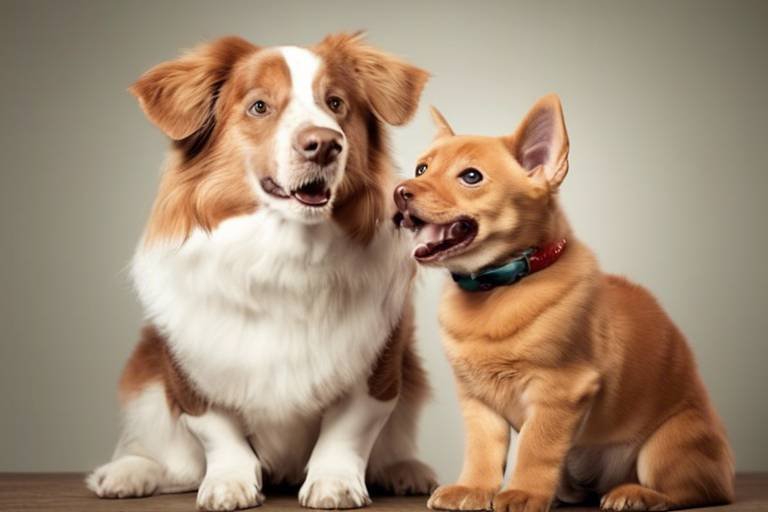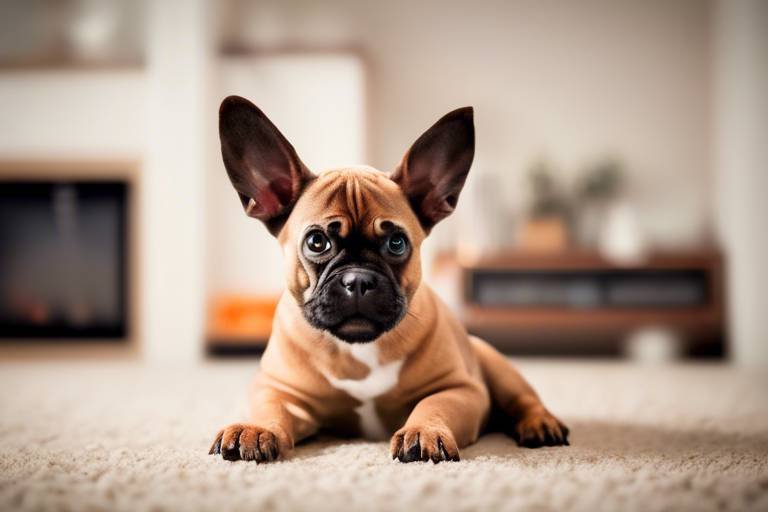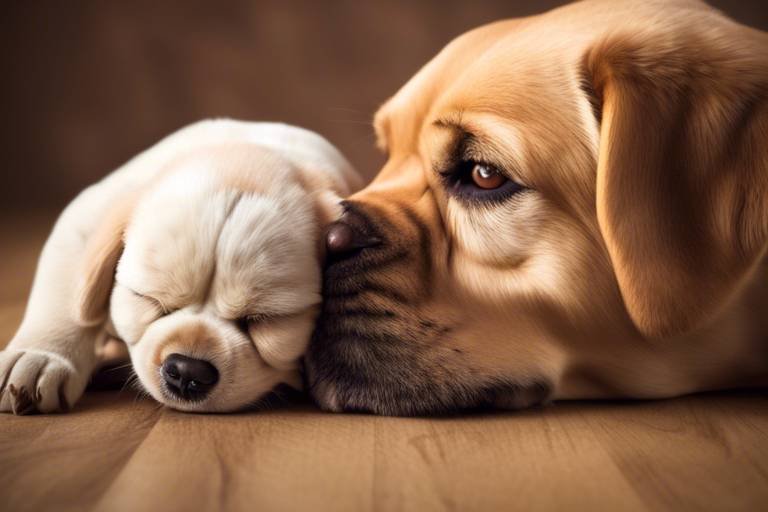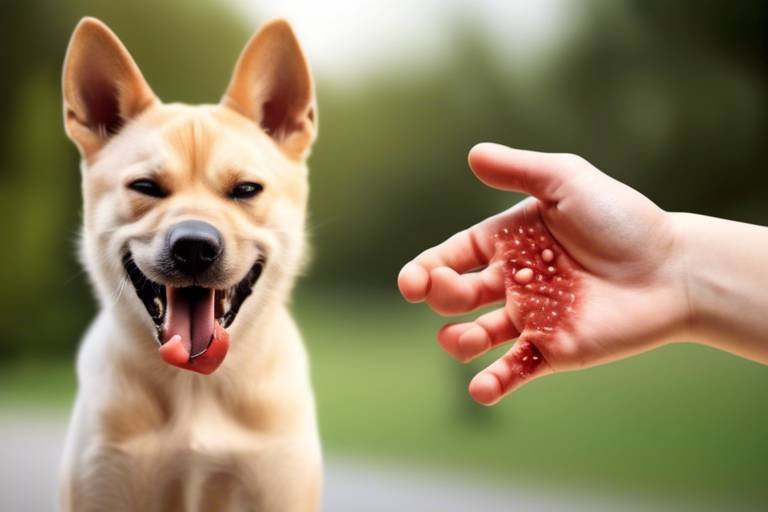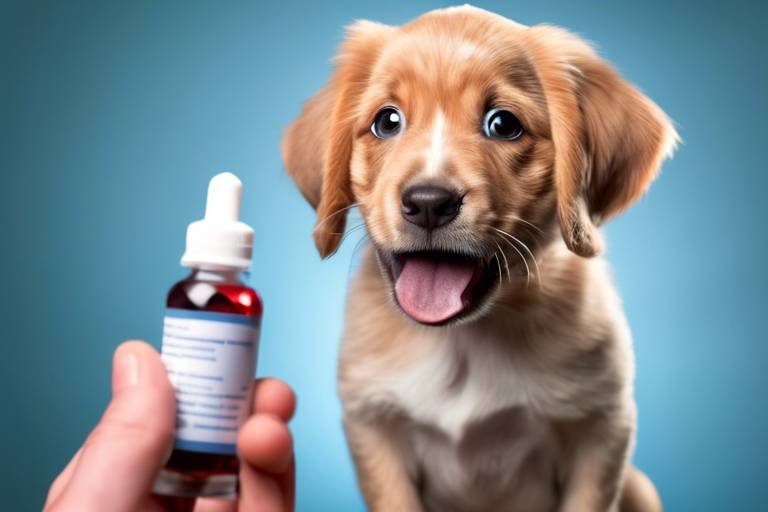How to Protect Your Pet from Pesticides and Chemicals
As pet owners, we often think of our furry friends as family members. Just like we take precautions to protect our children from harmful substances, we must also safeguard our pets from the dangers lurking in our homes and gardens. Pesticides and chemicals are ubiquitous in our environments, and while they serve their purpose in controlling pests and keeping our spaces clean, they can pose serious health risks to our beloved pets. In this article, we'll explore effective strategies to ensure your pets remain safe and healthy, all while maintaining a clean and pest-free home. Let’s dive into the world of pesticides and household chemicals, and discover how to create a safer environment for our four-legged companions!
Pesticides are substances designed to kill or control pests, including insects, weeds, and fungi. While they are effective in achieving their intended purpose, they can also be hazardous to pets. There are several types of pesticides, including insecticides, herbicides, and fungicides, each with its own set of risks. For example, insecticides may cause symptoms such as vomiting, diarrhea, or even seizures in pets if ingested or absorbed through the skin. Long-term exposure can lead to more severe health issues, including organ damage or cancer. It's crucial to recognize the potential dangers of these chemicals and take proactive measures to protect our pets.
Everyday household products can also be a source of danger for pets. Many cleaning supplies, air fresheners, and personal care items contain toxic ingredients that can harm our furry friends. For instance, common cleaning products like bleach or ammonia can cause respiratory issues or skin irritation in pets. Similarly, air fresheners often contain chemicals that are harmful if inhaled or ingested. It's essential to read labels and be aware of the dangers associated with these products. Here are a few common household chemicals to watch out for:
- Bleach
- Ammonia
- Drain cleaners
- Air fresheners
- Personal care items (like lotions and shampoos)
Fortunately, there are many eco-friendly and pet-safe alternatives to traditional cleaning products. By opting for natural cleaning solutions, you can maintain a clean home without exposing your pets to harmful chemicals. For example, vinegar and baking soda are fantastic alternatives that can tackle a variety of cleaning tasks effectively. Not only are these ingredients safe for pets, but they are also budget-friendly and readily available. Let’s explore some of these alternatives in detail.
Vinegar is a powerful natural cleaner that can be used to disinfect surfaces, remove odors, and even clean windows. When combined with baking soda, it creates a fizzing reaction that can help lift dirt and grime. To create a simple cleaning solution, mix equal parts of vinegar and water in a spray bottle. For tougher stains, sprinkle baking soda on the area, then spray the vinegar solution on top. Let it sit for a few minutes before wiping it away. This method is safe for your pets and effective for a variety of cleaning tasks!
Essential oils can also be a great addition to your cleaning routine, but it’s essential to choose pet-safe options. Oils like lavender, lemon, and eucalyptus can provide a fresh scent and have antibacterial properties. However, always ensure that the essential oils you use are safe for pets, as some can be toxic. A few drops mixed with water can create a pleasant and effective cleaner. Just remember to keep your pets away from areas where you’ve recently cleaned until everything is dry and safe!
When it comes to keeping your pets safe outdoors, timing and application methods are key when using pesticides in your garden. Always read the labels and follow the instructions carefully. It’s best to apply pesticides when your pets are indoors, and to keep them away from treated areas for at least 24 hours. Additionally, consider using barriers or fencing to restrict access to areas where chemicals have been applied.
Creating a garden that minimizes pesticide use is not only beneficial for your pets but also for the environment. By incorporating natural pest control methods and pet-safe plants, you can create a safe haven for your furry friends. Start by researching plants that deter pests naturally, thus reducing the need for chemical interventions. A well-planned garden can be both beautiful and safe for your pets!
There are numerous natural pest control strategies that can effectively manage pests without resorting to harmful chemicals. For example, introducing beneficial insects like ladybugs can help control aphid populations. Additionally, using diatomaceous earth can deter crawling insects while being safe for pets. By embracing these natural methods, you can maintain a healthy garden ecosystem while keeping your pets safe.
When selecting plants for your garden, it’s important to choose varieties that are non-toxic to pets. Some great options include:
- Marigolds
- Rosemary
- Basil
- Snapdragons
- Petunias
These plants not only enhance your garden's beauty but also help deter pests naturally, creating a safe environment for your furry companions.
Q: What should I do if my pet is exposed to pesticides?
A: If you suspect your pet has been exposed to pesticides, immediately contact your veterinarian or an animal poison control center. Provide them with as much information as possible about the pesticide and your pet's symptoms.
Q: Are there any completely pet-safe pesticides?
A: While there are some natural pesticides that are considered safer for pets, it's crucial to read labels and consult with your vet before using any product in your home or garden.
Q: How can I tell if a cleaning product is safe for pets?
A: Look for products labeled as "pet-safe" or "non-toxic." Additionally, avoid products with harsh chemicals and opt for those made from natural ingredients.

Understanding Pesticides and Their Risks
When it comes to keeping our homes and gardens looking pristine, pesticides often come to mind as a quick fix. However, it's crucial to understand that these chemicals, designed to eliminate pests, can pose significant risks to our beloved pets. From insects to weeds, pesticides are formulated to target a variety of organisms, but unfortunately, they can also affect our furry friends. The risk is especially high for pets who are naturally curious and tend to explore their environments with their noses and mouths.
There are several types of pesticides, including herbicides, insecticides, and fungicides, each with its intended use. While these products can be effective in controlling pests, their toxicity levels can vary dramatically. For instance, some common insecticides contain ingredients that are highly toxic to cats and dogs, leading to symptoms such as vomiting, diarrhea, seizures, or even death in severe cases. It's alarming to think that a simple application in your garden could lead to such dire consequences for your pet.
Moreover, the long-term effects of pesticide exposure can be even more insidious. Pets that are repeatedly exposed to these chemicals, whether through direct contact or ingestion, may develop chronic health issues over time. These can range from respiratory problems to neurological disorders. It’s like a ticking time bomb, and the last thing any pet owner wants is to see their furry friend suffer due to something that could have been easily avoided.
To give you a clearer picture, here’s a quick overview of common symptoms associated with pesticide exposure in pets:
| Symptom | Description |
|---|---|
| Vomiting | Often the first sign of ingestion, indicating the body’s attempt to expel the toxin. |
| Diarrhea | Can occur alongside vomiting, leading to dehydration if not treated. |
| Seizures | A severe reaction that requires immediate veterinary attention. |
| Excessive Salivation | A sign that something is wrong, often indicating poisoning. |
As pet owners, it's our responsibility to be vigilant about the products we use around our homes. Always read labels and consider the potential risks before applying any pesticide. If you're unsure, consult with your veterinarian for advice on pet-safe alternatives. Remember, protecting your pet from harmful chemicals is not just about immediate safety; it’s about ensuring their long-term health and happiness.
In summary, understanding pesticides and their associated risks is essential for any pet owner. By being informed and cautious, we can create a safer environment for our furry companions, allowing them to thrive without the looming threat of harmful chemicals. The more we know, the better we can protect our pets, ensuring they lead healthy and happy lives.
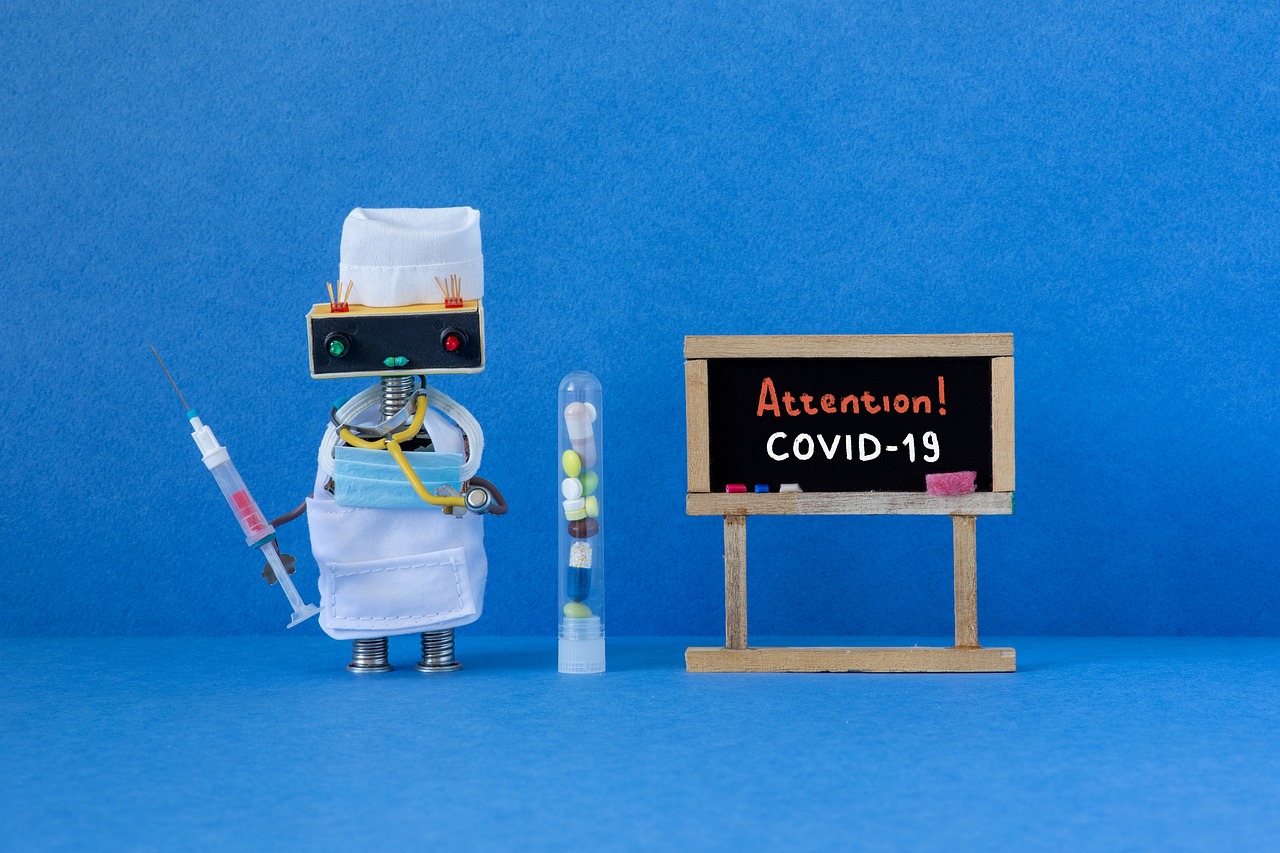
Identifying Common Household Chemicals
Households today are filled with a plethora of cleaning products, air fresheners, and other chemicals that, while effective in keeping our homes tidy, can pose significant risks to our furry friends. It's essential to be aware of these common household chemicals and understand how they can affect our pets. For instance, many cleaning products contain ammonia, which can irritate the respiratory tract of pets, leading to coughing and difficulty breathing. Similarly, bleach is a powerful disinfectant but can cause serious health issues if ingested or inhaled by pets, resulting in symptoms like vomiting, diarrhea, or even more severe complications.
Furthermore, don't overlook the dangers of air fresheners and scented candles. While they might make your home smell delightful, many contain volatile organic compounds (VOCs) that can be harmful to pets. These chemicals can lead to respiratory problems and skin irritations, especially in sensitive animals. Even seemingly harmless products, like laundry detergents and dish soaps, can be toxic. Some brands contain ingredients like phosphates and surfactants that can be harmful if ingested. It's crucial to read labels carefully and opt for pet-safe alternatives whenever possible.
To help you identify these common household chemicals, we’ve compiled a table showcasing some typical products and their potential risks to pets:
| Household Chemical | Potential Risks to Pets |
|---|---|
| Ammonia | Respiratory irritation, coughing, and eye irritation |
| Bleach | Vomiting, diarrhea, and respiratory distress |
| Air Fresheners | Respiratory problems, skin irritations |
| Fabric Softeners | Gastrointestinal upset, skin reactions |
| Dish Soap | Vomiting, diarrhea, and lethargy |
Understanding these risks is the first step in creating a safe environment for your pets. Always store cleaning products out of reach and consider using pet-safe alternatives for your cleaning needs. It's not just about keeping your home clean; it's about ensuring the health and well-being of your beloved companions.
In addition to being aware of these chemicals, it's essential to recognize the symptoms of exposure. If your pet shows signs like excessive drooling, vomiting, or difficulty breathing after you've used any household products, it's crucial to seek veterinary care immediately. Remember, prevention is always better than cure!
- What are some signs my pet has been exposed to household chemicals? Look for symptoms like vomiting, diarrhea, excessive drooling, or difficulty breathing. If you notice any of these signs, contact your vet immediately.
- Are there any safe cleaning products I can use? Yes! Look for eco-friendly and pet-safe cleaning products or consider making your own using vinegar and baking soda.
- How can I keep my pets safe while cleaning? Always ensure your pets are in a different room while cleaning and allow for proper ventilation in your home.
Safe Cleaning Alternatives
When it comes to keeping our homes clean, many of us may not realize how the products we use can impact our beloved pets. Traditional cleaning products often contain harsh chemicals that can pose serious health risks to our furry friends. Fortunately, there are that allow us to maintain a tidy home without compromising our pets' safety. By making the switch to more natural solutions, we can create a healthier environment for both ourselves and our pets.
One of the simplest and most effective alternatives is using a mixture of vinegar and baking soda. These two household staples are not only non-toxic but also incredibly versatile. For instance, vinegar can be used as a disinfectant and deodorizer, while baking soda works wonders as a gentle abrasive cleaner. Together, they can tackle a variety of cleaning tasks, from removing stubborn stains to freshening up carpets. Just mix equal parts of vinegar and water in a spray bottle, and you have a powerful cleaning solution that is safe for your pets.
Another option is to incorporate essential oils into your cleaning routine. However, it's crucial to choose pet-safe oils and use them wisely. Oils like lavender, lemon, and eucalyptus can provide a pleasant aroma and have natural antibacterial properties. You can create your own cleaning spray by diluting a few drops of essential oil in water. Just make sure to keep the mixture out of reach of pets, as some essential oils can be harmful if ingested in large quantities. Additionally, always consult with your veterinarian before introducing any new products into your home, especially if your pet has existing health issues.
For those who enjoy DIY solutions, consider making your own all-purpose cleaner using the following simple recipe:
Ingredients: - 1 cup of water - 1 cup of vinegar - 10 drops of pet-safe essential oil (optional) Instructions: 1. Combine all ingredients in a spray bottle. 2. Shake well before use. 3. Spray on surfaces and wipe clean with a cloth.
Using these natural alternatives not only protects your pets but also contributes to a more sustainable lifestyle. Many commercial cleaning products come in plastic containers that contribute to environmental waste. By opting for natural ingredients, you’re making a conscious choice that benefits both your home and the planet.
In conclusion, switching to safe cleaning alternatives is a simple yet effective way to ensure your home is a healthy space for your pets. By using natural ingredients like vinegar, baking soda, and pet-safe essential oils, you can clean your home without the worry of harmful chemicals. Remember, a clean home is a happy home, especially when it’s safe for our furry companions!
- Are vinegar and baking soda safe for all pets?
Yes, vinegar and baking soda are generally safe for most pets. However, make sure to observe your pets when using these products to ensure they do not ingest large amounts. - What essential oils are safe for pets?
Some pet-safe essential oils include lavender, chamomile, and ginger. Always dilute them properly and consult your vet if unsure. - Can I use bleach to clean my home if I have pets?
No, bleach is highly toxic to pets and should be avoided. Opt for safer alternatives instead.
Vinegar and Baking Soda Solutions
When it comes to cleaning your home without putting your beloved pets at risk, vinegar and baking soda emerge as champions. These two household staples are not only effective but also incredibly versatile, making them the perfect duo for a pet-friendly cleaning regimen. Imagine tackling tough stains, eliminating odors, and disinfecting surfaces, all while knowing that your furry friends are safe from harmful chemicals. Sounds like a dream, right?
Vinegar, with its natural acidity, is a powerhouse for breaking down grime and cutting through grease. It can be used to clean windows, countertops, and even as a fabric softener in laundry. On the other hand, baking soda is a gentle abrasive that works wonders on tougher stains and odors. When combined, these two ingredients create a cleaning solution that rivals any store-bought product, minus the toxic fumes and potential hazards for your pets.
Here’s how you can use them effectively:
- All-Purpose Cleaner: Mix equal parts of vinegar and water in a spray bottle. This solution can be used on most surfaces, from kitchen counters to bathroom tiles. Just remember to avoid using it on natural stone surfaces, as the acidity can etch the stone.
- Odor Neutralizer: For carpets or upholstery, sprinkle baking soda liberally over the area, let it sit for 15-30 minutes, and then vacuum it up. This will help absorb any unpleasant odors, leaving your home smelling fresh.
- Stain Remover: For tougher stains, make a paste with baking soda and a bit of water. Apply it to the stain, let it sit for a few minutes, and then scrub gently. Rinse with water or wipe with a vinegar solution to remove any residue.
Not only are these solutions effective, but they also save you money in the long run. Instead of spending on expensive cleaning products filled with harsh chemicals, you can easily whip up your own pet-safe cleaners with items you likely already have in your pantry.
The best part? These natural solutions are also environmentally friendly. By opting for vinegar and baking soda, you're not only protecting your pets but also contributing to a healthier planet. It's a win-win situation! So, the next time you're gearing up for a cleaning session, consider reaching for these two humble yet powerful ingredients. Your pets will thank you for it!
Q: Are vinegar and baking soda safe for all pets?
A: Yes, vinegar and baking soda are generally safe for most pets. However, it’s always a good idea to ensure your pets do not ingest large amounts of these substances.
Q: Can I use vinegar and baking soda on all surfaces?
A: While vinegar and baking soda are versatile, avoid using vinegar on natural stone surfaces like granite or marble, as it can damage the stone.
Q: How do I store homemade cleaning solutions?
A: Store your vinegar and baking soda cleaning solutions in a cool, dark place in labeled spray bottles to keep them effective and safe.
Essential Oils for Cleaning
When it comes to keeping your home clean and fresh, essential oils are a fantastic alternative to harsh chemicals that can be harmful to your pets. These natural oils not only provide a pleasant aroma but also possess antibacterial and antifungal properties that make them effective cleaning agents. Imagine walking into your home and being greeted by the invigorating scent of lemon or lavender, all while knowing your furry friends are safe and sound. It’s a win-win!
One of the key advantages of using essential oils for cleaning is that they can be easily incorporated into your routine without the need for complicated recipes or special equipment. For instance, mixing a few drops of tea tree oil with water can create a powerful spray that disinfects surfaces while keeping your pets safe from harmful residues. But hold on! Not all essential oils are created equal when it comes to pet safety. Some oils can be toxic to pets, so it’s crucial to choose wisely.
Here’s a quick rundown of pet-safe essential oils that you can use for cleaning:
- Lemon Oil: A natural disinfectant with a fresh scent that helps to cut through grease and grime.
- Lavender Oil: Not only does it smell amazing, but it also has calming properties that can soothe both you and your pets.
- Peppermint Oil: Great for repelling pests and leaving your home smelling minty fresh.
- Tea Tree Oil: Known for its antibacterial properties, it’s effective in cleaning surfaces but should be used in moderation.
To create your own cleaning solution, simply mix a few drops of your chosen essential oil with water in a spray bottle. Shake well and spray on surfaces like countertops, sinks, and even floors. Just remember to test a small area first to ensure no adverse reactions occur. And, of course, keep your pets away from the area until it’s fully dried!
Now, you might be wondering, “How do I know if an essential oil is safe for my pet?” It’s a valid question! The best approach is to do your research and consult with your veterinarian. They can provide insights into which oils are safe and how to use them effectively. Additionally, always observe your pets for any signs of discomfort after using a new product, as they can be sensitive to certain scents.
In conclusion, incorporating essential oils into your cleaning routine not only enhances the ambiance of your home but also ensures a pet-friendly environment. With a little creativity and caution, you can create a clean, aromatic space that both you and your pets can enjoy without the worry of harmful chemicals lurking around. So why not give it a try? Your home—and your pets—will thank you!
1. Are all essential oils safe for pets?
No, not all essential oils are safe for pets. Some oils can be toxic, so it's essential to research or consult with a veterinarian before using them.
2. How do I use essential oils for cleaning?
You can mix a few drops of essential oil with water in a spray bottle to create a natural cleaning solution. Always test a small area first!
3. Can essential oils harm my pets?
Yes, certain essential oils can harm pets if ingested or applied directly to their skin. Always ensure they are diluted and used in a well-ventilated area.
4. What are some pet-safe essential oils?
Pet-safe essential oils include lemon, lavender, peppermint, and tea tree oil (in moderation). Always consult a vet for specific advice.
Outdoor Safety Measures
When it comes to protecting your furry friends from the dangers of pesticides and chemicals, outdoor safety measures are crucial. Imagine your pet frolicking in the garden, only to be exposed to harmful substances that could jeopardize their health. To prevent such scenarios, it’s essential to implement some straightforward yet effective strategies. First and foremost, timing is everything. If you must use pesticides, try to apply them when your pets are indoors. This simple act can significantly reduce their exposure to harmful chemicals.
Moreover, consider the weather conditions before applying any pesticides. Rain can wash away chemicals, leading to runoff that may contaminate areas where your pets roam. Ideally, wait for at least 24-48 hours after application before allowing your pets back outside. This ensures that the chemicals have had enough time to settle and reduce the risk of exposure. Additionally, always read the labels on pesticide products carefully. There’s a wealth of information available regarding the safety of these products around pets, and it's crucial to choose those that are labeled as pet-safe.
Another important factor is the method of application. If possible, opt for targeted application methods that minimize the spread of chemicals. For instance, using a spray bottle or a targeted applicator can ensure that only the affected areas are treated, thereby limiting the exposure risk to your pets. You might also want to consider using barriers, such as fencing or designated play areas, to keep your pets away from treated zones until it's safe for them to return.
Lastly, always keep an eye out for any signs of distress in your pets after pesticide application. Symptoms such as excessive drooling, vomiting, or unusual behavior can indicate exposure to harmful chemicals. If you notice any of these signs, contact your veterinarian immediately. Remember, a little caution goes a long way in ensuring the safety and well-being of your beloved companions.
- What should I do if my pet is exposed to pesticides? If you suspect your pet has been exposed, immediately wash them with soap and water and contact your veterinarian for further advice.
- Are there any safe pesticides I can use around my pets? Yes, look for pesticides that are specifically labeled as pet-safe and follow the application guidelines carefully.
- How can I tell if a household chemical is safe for my pet? Always check the product label for warnings regarding pets and consult your veterinarian if you're unsure.
- What natural alternatives can I use instead of pesticides? Consider using natural pest control methods such as diatomaceous earth or introducing beneficial insects that prey on pests.
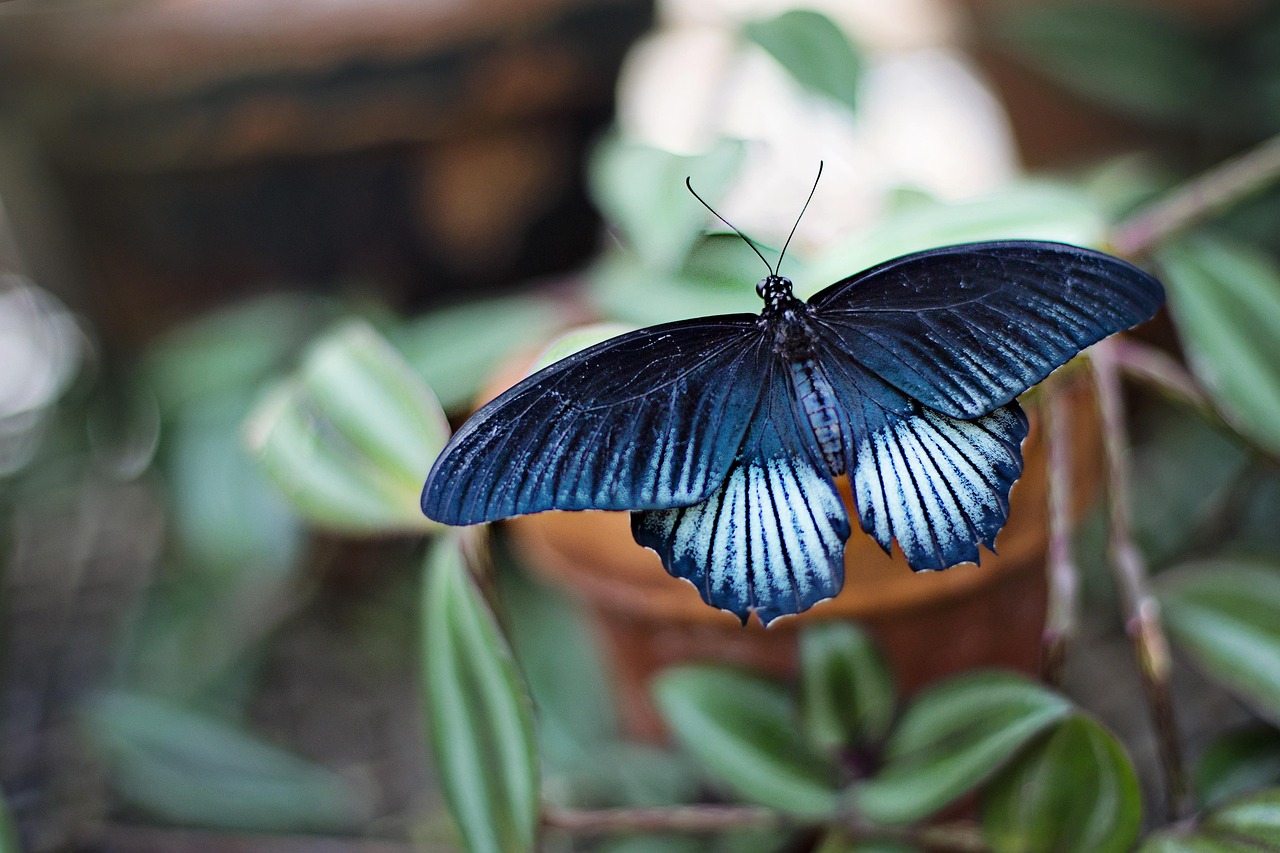
Creating a Pet-Friendly Garden
When it comes to our furry friends, creating a pet-friendly garden is not just a luxury; it's a necessity. Imagine your garden as a safe haven where your pets can roam freely, sniffing around and enjoying the great outdoors without the looming threat of harmful chemicals. The good news is that you can design a garden that not only looks beautiful but also prioritizes the health and safety of your pets. So, how do you achieve this balance? Let's dive into some effective strategies!
First and foremost, minimizing the use of pesticides is crucial. Traditional pesticides can be detrimental to your pets' health, causing symptoms ranging from mild irritation to severe poisoning. Instead, consider incorporating natural pest control methods that are both effective and safe. For instance, introducing beneficial insects like ladybugs can help keep harmful pests at bay without the need for chemicals. Additionally, you can use homemade remedies such as a mixture of water and dish soap to deter aphids and other garden pests.
Next, think about the plants you choose for your garden. Some plants are not only beautiful but also safe for pets. Here’s a quick list of pet-safe plants that you can consider:
- Marigolds: These bright flowers not only add color but can also deter pests.
- Spider Plants: Great for indoor gardening, they're non-toxic and easy to care for.
- Boston Ferns: A lush addition that is safe for pets and helps improve indoor air quality.
- Cat Grass: Perfect for cats, this grass is safe and can keep them entertained.
Moreover, creating designated play areas for your pets can transform your garden into a paradise for them. Think about installing a small sandbox or a digging area where your dogs can unleash their inner archaeologists without destroying your prized flower beds. You could also set up a shaded spot with comfortable seating for your pets to relax on warm days. Incorporating natural barriers such as low fences or hedges can help define these areas while keeping your pets safe from wandering too far.
To further enhance your pet-friendly garden, consider adding some water features. A small pond or fountain not only serves as a lovely focal point but can also provide hydration for your pets during those hot summer days. Just ensure that the water is clean and free from any chemicals that could pose a risk. Remember, a well-maintained garden is a safe garden!
Lastly, be mindful of the areas where you store gardening supplies. Keep fertilizers, tools, and any other potentially harmful substances locked away and out of reach. This simple precaution can prevent accidental ingestion or injury, ensuring that your pets can explore without a care in the world.
Q: Are all plants safe for pets?
A: No, some plants can be toxic to pets. Always research plants before adding them to your garden.
Q: How can I naturally deter pests without chemicals?
A: Use beneficial insects, homemade soap sprays, or companion planting to keep pests at bay.
Q: What should I do if my pet accidentally ingests something harmful?
A: Contact your veterinarian immediately or call a pet poison hotline for guidance.
By implementing these strategies, you can create a garden that is not only visually appealing but also a safe haven for your pets. After all, a happy pet means a happy home!
Natural Pest Control Methods
When it comes to keeping your garden pest-free, the idea of using harsh chemicals can be a real turn-off, especially if you're a pet owner. The good news is that there are plenty of that not only keep your garden thriving but also ensure your furry friends stay safe. Think of it as creating a harmonious ecosystem where both plants and pets can coexist without the threat of harmful chemicals lurking around.
One effective approach is to introduce beneficial insects into your garden. These little allies, such as ladybugs and lacewings, are nature's own pest control agents. They feast on aphids, mites, and other pests that can wreak havoc on your plants. By attracting these helpful critters, you can reduce the need for any chemical interventions. Planting flowers like marigolds or dill can help lure these beneficial insects into your garden, creating a win-win situation for everyone involved.
Another method is to utilize homemade sprays that are both effective and pet-safe. For instance, a simple mixture of water and a few drops of dish soap can deter common pests like aphids and spider mites. Just spray it on the affected areas, and watch those pesky intruders vanish! Additionally, consider using garlic or chili pepper sprays, which are known for their strong scents that pests dislike. Not only are these sprays easy to make, but they also provide a natural barrier against unwanted visitors.
Moreover, companion planting is a fantastic strategy that can deter pests naturally. This involves planting certain plants next to each other to enhance growth and ward off pests. For example, planting basil alongside tomatoes can repel flies and mosquitoes, while marigolds can deter nematodes and other harmful insects. It's like assembling a dream team of plants that protect each other while keeping your garden looking gorgeous!
For those who prefer a more hands-on approach, physical barriers can be incredibly effective. Using row covers or garden nets can protect your plants from insects while allowing sunlight and rain to nourish them. This method is not only safe for your pets but also ensures that your plants are shielded from harm. Just imagine your garden as a fortress, where only the good bugs are allowed in!
Lastly, don't underestimate the power of a clean garden. Regularly removing debris, dead plants, and weeds can significantly reduce pest habitats. Think of it as decluttering your home; a tidy space is less inviting for pests. By keeping your garden clean and well-maintained, you're taking proactive steps to minimize pest problems before they even start.
In conclusion, employing natural pest control methods is not only beneficial for your garden but also essential for the safety of your pets. By embracing these eco-friendly strategies, you can create a thriving environment where both plants and pets flourish. Remember, a little creativity and effort can go a long way in maintaining a pest-free garden while ensuring your furry friends are protected from harmful chemicals!
- What are some natural pest control methods I can use in my garden?
Some effective methods include introducing beneficial insects, using homemade sprays, companion planting, utilizing physical barriers, and maintaining a clean garden.
- Are homemade pest control sprays safe for pets?
Yes, many homemade sprays, such as those made from soap, garlic, or chili pepper, are safe for pets when used correctly.
- What plants can I grow to repel pests naturally?
Plants like marigolds, basil, and dill can help repel pests while enhancing the beauty of your garden.
- How can I attract beneficial insects to my garden?
Planting flowers that attract beneficial insects, such as marigolds or dill, can help create an inviting environment for them.
Choosing Pet-Safe Plants
When it comes to creating a garden that is both beautiful and safe for your furry friends, choosing the right plants is crucial. Many common garden plants can be toxic to pets, leading to serious health issues if ingested. Just like you wouldn't want to serve your pet a plate of harmful food, you should be equally cautious about the greenery they might nibble on in your garden. So, how do you select pet-safe plants? Let's dive into some options that will keep your garden vibrant while ensuring your pets stay safe.
First, it's essential to understand that not all plants are created equal. While some may look appealing, they can harbor hidden dangers. For instance, popular flowers like lilies and azaleas are known to be toxic to cats and dogs, respectively. On the other hand, there are plenty of gorgeous plants that are completely safe for your pets. Here are a few pet-friendly options you might consider:
- Spider Plant: This hardy plant is not only easy to care for but also non-toxic to both cats and dogs. Its long, arching leaves add a lovely touch to any space.
- Boston Fern: A classic choice, the Boston fern is safe for pets and great for adding a lush, green vibe to your home or garden.
- Areca Palm: This beautiful palm is an excellent air purifier and poses no threat to your pets.
- Calathea: Known for its striking foliage, this plant is a pet-safe option that can brighten up any room.
When selecting plants, always consider their growing conditions and how they fit into your garden's ecosystem. For example, if you live in a sunny area, you might opt for succulents like Hens and Chicks or Jade Plants, both of which are safe for pets and thrive in bright light. On the flip side, if your garden has shaded spots, consider plants like African Violets or Prayer Plants, which are not only pet-friendly but also flourish in lower light conditions.
Moreover, think about incorporating plants that can help deter pests naturally. For instance, rosemary, lavender, and marigolds are not only safe for pets, but they can also repel unwanted insects. It's like having a personal bodyguard for your garden while keeping your pets safe!
As you embark on your journey to create a pet-friendly garden, keep in mind that education is key. Familiarize yourself with the plants you already have and do some research before adding new ones. Many resources are available online, including plant databases and pet safety websites, that can guide you in making informed decisions. By being proactive and knowledgeable, you can cultivate a garden that is not only stunning but also a safe haven for your beloved pets.
1. What should I do if my pet ingests a toxic plant?
If you suspect your pet has ingested a toxic plant, contact your veterinarian immediately. Provide them with as much information as possible, including the type of plant and the amount consumed.
2. How can I find out if a plant is safe for my pet?
Research online through reputable sources or consult with your veterinarian. There are many lists available that categorize plants based on their toxicity to pets.
3. Are there any plants that are safe for both dogs and cats?
Yes, many plants are safe for both dogs and cats, such as spider plants, Boston ferns, and areca palms. Always double-check before introducing new plants to your home or garden.
Frequently Asked Questions
- What are the signs that my pet has been exposed to pesticides?
Common symptoms of pesticide exposure in pets include vomiting, diarrhea, excessive drooling, tremors, and lethargy. If you notice any of these signs, it's crucial to contact your veterinarian immediately for guidance.
- How can I safely clean my home without using harmful chemicals?
There are several eco-friendly options for cleaning your home. You can use a mixture of vinegar and baking soda for various cleaning tasks, or opt for pet-safe essential oils like lavender or lemon for deodorizing surfaces. Always ensure proper ventilation when using any cleaning product.
- Are there any plants that are safe for pets in my garden?
Absolutely! Some pet-safe plants include rosemary, basil, and marigolds. These not only enhance your garden's beauty but can also help deter pests naturally, creating a safe haven for your furry friends.
- What should I do if I suspect my pet has ingested a harmful chemical?
If you suspect that your pet has ingested a harmful chemical, do not wait for symptoms to appear. Call your veterinarian or a pet poison control hotline immediately for advice on the next steps to take.
- How can I protect my pet while using pesticides outdoors?
To keep your pet safe when using pesticides outdoors, always read the label for safety instructions, apply pesticides when pets are indoors, and ensure that the area is thoroughly dried and ventilated before allowing your pet back outside.
- Are there any non-toxic pest control methods I can use?
Yes! Natural pest control methods include using diatomaceous earth, introducing beneficial insects like ladybugs, and employing traps. These methods are effective in managing pests without exposing your pets to harmful chemicals.



